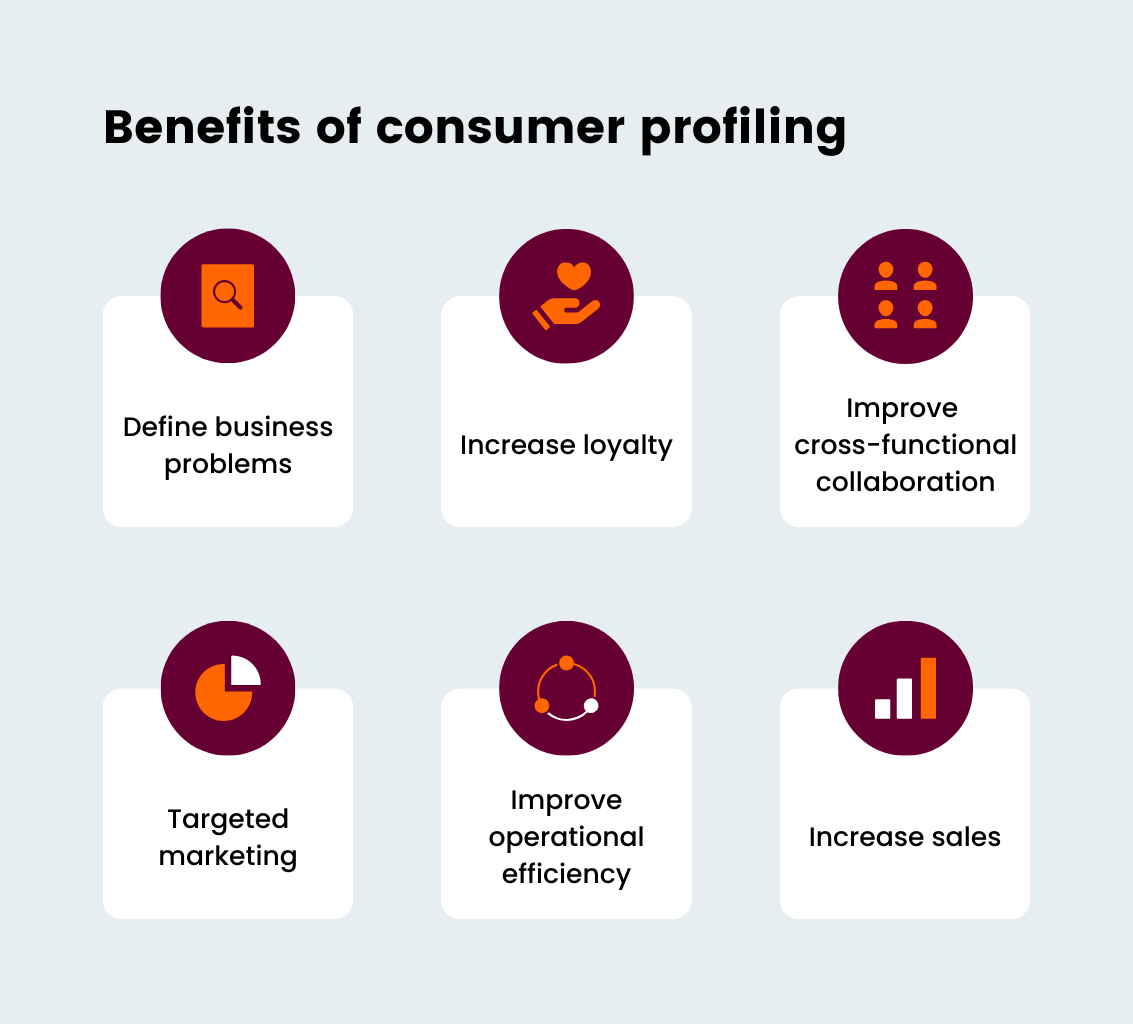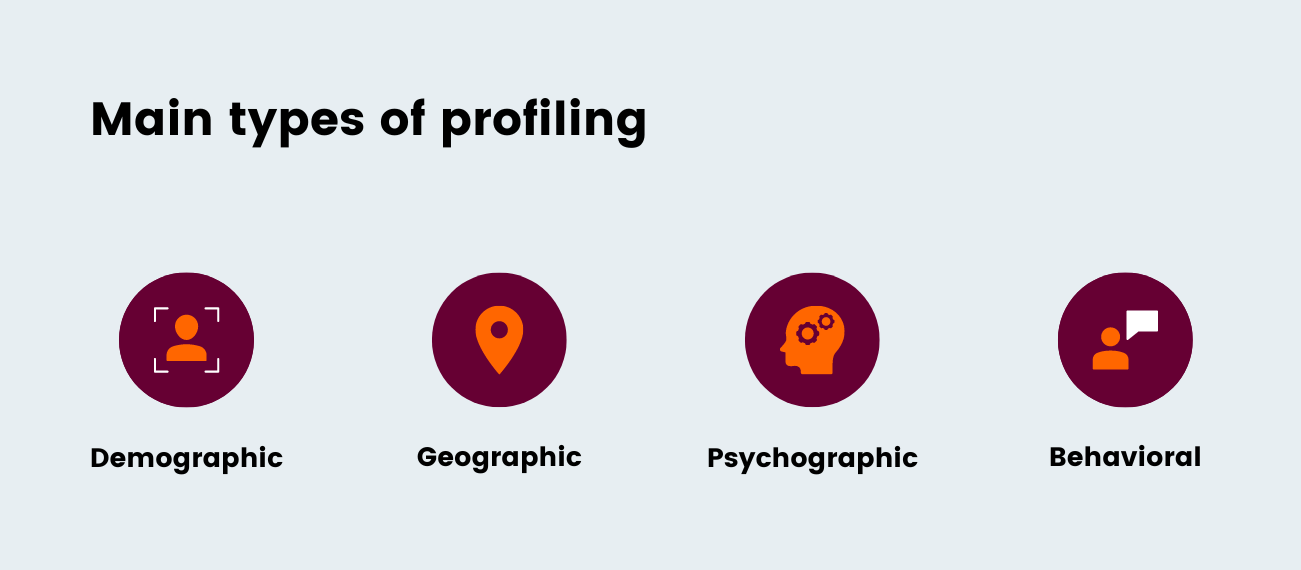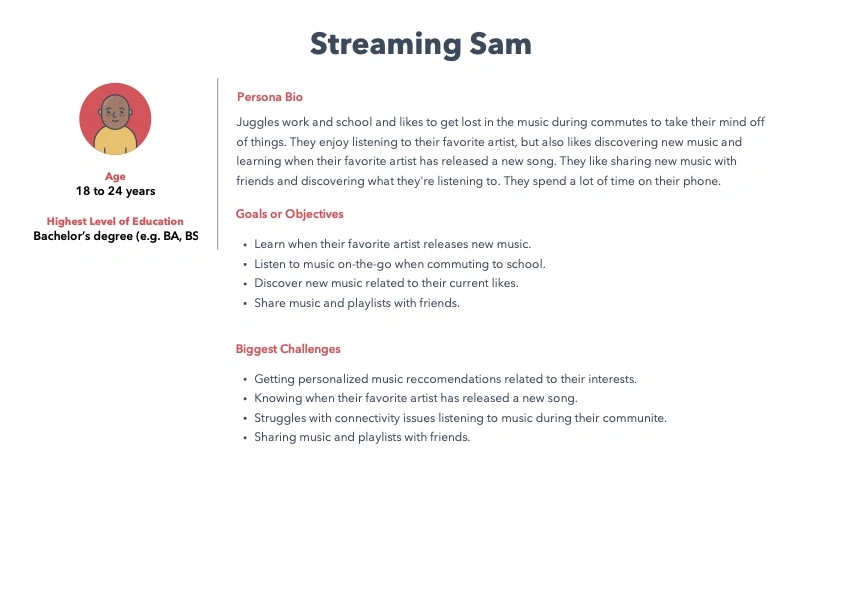Have you ever felt like a book, album, or movie was made just for you? That connection is powerful and can create a similar emotional bond between consumers and brands.
Achieving a connection starts with understanding your customers. Consumer profiling enables you to understand their needs, motivations, and pain points and is critical for building products, services, and experiences that are customer-centric.
But what exactly is a consumer profile, and how can you gather the necessary data to create one?
In this article, we provide tips on what consumer profiling is and how to use it for business growth.
Read on, or jump to what’s most relevant for you:
What is consumer profiling?
Put simply, consumer profiling is the process of gathering data about your ideal customer across a number of meaningful dimensions so that you can get to know them better.
Consumer profiling is the tool by which brands can immerse themselves in the minds of their target audience to create emotive and distinctive customer experiences.
Profiling will help you answer important questions about your ideal customer, including: what do they like, what do they dislike? What values do they hold? What excites them? What are their typical shopping habits? Where do they gather information?
When done right, there are many benefits consumer profiling provides to businesses.

These benefits include gaining insight into customer issues, aligning products and services to address these issues, enhancing brand loyalty, reducing customer turnover, and more.
By incorporating customer profiling into your market research efforts, you can make meaningful improvements to product or service areas that matter to your target audience, ensuring your brand stays relevant and competitive.
The four key types of consumer profiling
There are four common types of consumer profiling marketers use; demographic, geographic, psychographic, and behavioral.

1. Demographic profiling
This is the simplest way to classify your customers.
By conducting market research focused on demographic profiling, you can gather basic information such as age, gender, income, marital status, education level, and more about your target audience.
Although this information may not be beneficial on its own, it can serve as a helpful starting point to better understand your ideal customer’s desires, needs, motivations, and challenges.
2. Geographic profiling
This is another simple yet effective way of profiling your consumers. It involves conducting a detailed analysis of your customer’s location and how that influences their beliefs, behaviors, and motivations.
For example, geographic profiling may help you determine how urban vs. regional living impacts desire for your product, or how your brand messaging is interpreted by different countries and/or cultures.
As a marketer, you might be familiar with the term “transcreation”. It refers to the process of adapting a message from one language to another while still maintaining its intent, style, tone, and context.
For brands operating in global markets, though, it’s not just about language barriers but cultural nuances as well. A light-hearted Coca-Cola ad that uses tongue-in-cheek humor to make American audiences laugh may not translate to Asian markets, for example, where people’s sense of humor is different.
3. Psychographic profiling
This is where you get to dig into the more “nitty gritty” details of what your ideal audience thinks or feels to capture a view of their personality, values, attitudes, and lifestyle.
In order to establish an emotional connection between your customers and your brand, you need to appeal to their attitudes and values, and it’s important to note that these evolve over time.

As an example, right now it’s important to understand how people’s attitudes have shifted during the cost of living crisis.
Are your audiences paring back spending in some categories? Are they prioritizing convenience or quality over price? Does sustainability drive specific decisions?
For instance, the 2023 US Brand Sustainability Benchmark Report identified that 7 in 10 consumers were switching food and grocery brands to save money. And while price and quality were the primary overall influences on decision-making, sustainability was important, especially for cohorts like Millennials, where 1 in 10 rated sustainability more important than price or quality.
Understanding what your ideal consumers value during times of hardship can help you make necessary adjustments to your products, services, or pricing to ensure you are delivering the value they seek.
Psychographic profiling will help you answer questions like:
- What matters most to your consumers?
- What captures their interest?
- What do they like and dislike?
- If given more time, what activity would they choose to do?
- How do they feel about an important issue?
- What makes them prefer one brand over another?
- What factors are most important in their decision-making?
4. Behavioral profiling
This is where businesses profile consumers based on buying habits and behaviors through the buying journey. By analyzing behavioral patterns, you can uncover actionable insights into customer engagement and purchasing patterns that may have gone unnoticed.
The better you understand things like the customer’s decision journey and the buying on-ramps and off-ramps for your brand then the better you can predict warning signs of a lapsed customer, which reduces churn and boosts brand loyalty.
Behavioral profiling will help you answer questions like:
- How frequently are customers making purchases, and what are they buying alongside your products?
- Are customers shopping with you in-store or online?
- What channels are they finding you through and engaging with you in?
How to gather consumer profiling data
For businesses that are looking to build better products and services, the process starts with understanding your target audience’s needs and desires.
Consumer research is an invaluable part of this process, and there are many different ways you can get under the skin of your audience. This includes observation, ethnography, qualitative, and quantitative research. Using a combination of these data sources is the most effective way to get a complete picture of your audience’s needs.
Using quantitative research through consumer surveys is a powerful way for businesses to conduct consumer profiling. This technique provides rich and robust data at scale to inform important business decisions.
Using quick-turn research tools for consumer surveys
Consumer surveys are a fast and effective way to gather data on your ideal consumer profiles.
Brands can utilize quick-turn research tools to make the process of identifying your ideal audiences faster, easier, and more affordable. Here’s how these tools can help:
Templates enable speedy deployment
If you’re starting your customer profiling journey, using a consumer profile survey template can be a great introduction. For example, you can use Glow’s Consumer Profiling Survey Kit to help you set up your survey faster and ensure the quality of the questions you are asking.
Access to a representative sample of your audience
Research platforms allow you to send your surveys to the audience of your choice. These platforms enable access to millions of people so you can isolate your audiences and ask them the right questions.
For example, Glow’s research platform provides direct access to over 110 million consumers and 6 million B2B professionals worldwide. You can use demographic filters, qualifying questions, screeners, and more to ensure you are reaching the right people for your profiling survey. Learn more about Glow’s audience here.
Easier multi-market profiling
For brands spread across different regions, coordinating multi-market research used to be hard. Now platforms like Glow enable you to source respondents from hundreds of countries. Combine that with instant language translation that supports rapid localization of surveys, and the time to collect profile data is reduced whilst also making it much easier to compare responses across markets.
Real-time optimization
Some platforms enable you to see your data live with real-time visualization, so you can optimize your insights as you learn. The data might suggest adding a new respondent group or refining questions to provide more powerful insights. This functionality ensures you maximize the return on your research investment and get the richness you need from your profile data set.
Find the insights easily
Most platforms have simple analysis tools that will allow you to analyze and refine your consumer profiles. Platforms such as Glow have powerful capabilities that enable you to analyze your data with one-click interrogation, such as quick filtering options to identify variances across sub-groups such as demographics or responses to questions. This functionality saves time and makes it easier to find the insights that drive effective profiles.
Update consumer profiles quickly
Customer preferences and actions can change over time, so It’s important to regularly update and improve consumer profiles. Platforms such as Glow enable you to save your respondent targeting selections and survey as a template, so you can deploy quickly and consistently to measure any changes in attitudes or behavior.
How to use your consumer profiles
Once you’ve built out your ideal profiles, the trick is to activate them effectively, usually through transforming profiling data into buyer personas that correspond with key market segments.
Buyer personas are semi-fictitious characterizations of your ideal customers based on your research and other data your business has. They can help align different parts of the organization, from marketing to sales to service with the shared goal of creating and delivering compelling and consistent experiences to meet the needs and desires of those personas.
For example, marketing can build out customer journeys for each persona so that activity aligns with the desires and purchase behavior of each to drive more effective lead generation. Sales can use the personas to qualify prospects more efficiently and shorten the sales cycle by developing content that effectively addresses their key pain points.
Here are some examples of buyer personas and a handy tool for making your own from Hubspot.
If you don’t know it, Glow it.
If you don’t have a deep, rich and useful understanding of who your ideal customers are and their attitudes, behaviors and motivations, Glow can help. We work with progressive brands like Mondelez, Reckitt, Employment Hero, EssenceMediacom, Ogilvy and more to provide robust consumer insights fast.
We can help you too; learn more about consumer profiling with Glow here. Or book a 20-minute intro with one of our friendly experts to show you the power of the platform.


